For three long years we’ve been waiting for Harebrained Schemes — those beautiful old-school necromancers who resurrected Shadowrun the way it was meant to be played — to wrap up work on the crowdfunded mech combat simulator BattleTech.
I’ve had the good fortune to sink nearly 40 hours into the game pre-release so far, and other than a few minor issues here and there, I can confidently say that the core demographic of this game is going to be very pleased.
If you remember the old-school FASA box set fondly, it’s a foregone conclusion you will end up fangirling pretty hard while noticing all the little details packed into every aspect of the game, from vehicle types to Inner Sphere history lessons.
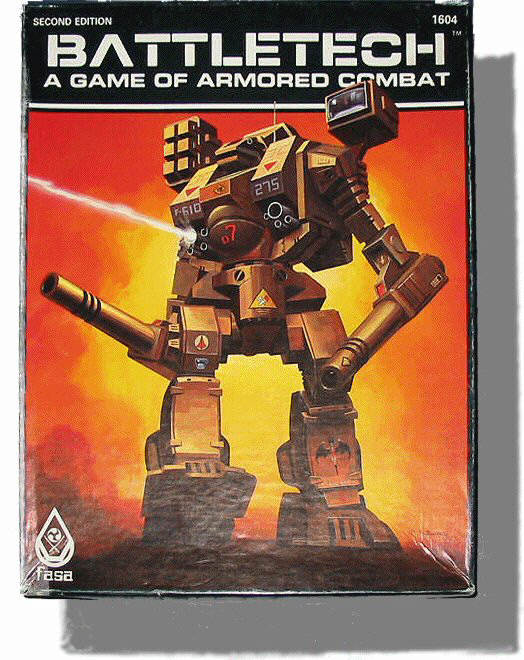
Long story short, if you had this box set, you are going to love this game.
BattleTech‘s Mech Combat
First and foremost, it needs to be said immediately that if you want a fast-paced mech game filled with eye candy and focused on the explosions over the tactics, then the upcoming Mechwarrior 5: Mercenaries will be your best choice.
This rendition of BattleTech instead sticks to the franchise’s RPG/wargaming roots and is a slower, turn-based entry on purpose. Both styles have their place, of course, and for fans of that earlier era of tabletop gaming, this is probably the best and most faithful PC interpretation of the series so far.
Granted, the graphics aren’t fabulous, but they get the job done, and there are lots of little details to create immersion, like trees swaying as you fire weaponry through them or mechs moving backwards to gain the best firing arc.
Combat is highly tactical, with a gigantic range of options depending on your mech lance’s makeup, the extreme level of customization for weapon loadouts on any given mech, the skills of your pilots, the terrain, the biome of the planet you are battling on, and so on.
There’s extreme satisfaction in figuring out that perfect battleground position where you can hit every enemy at the proper ranges for all those weapons you’ve refitted onto your mech (which will have wildly different optimal ranges for hit percentages and damage).
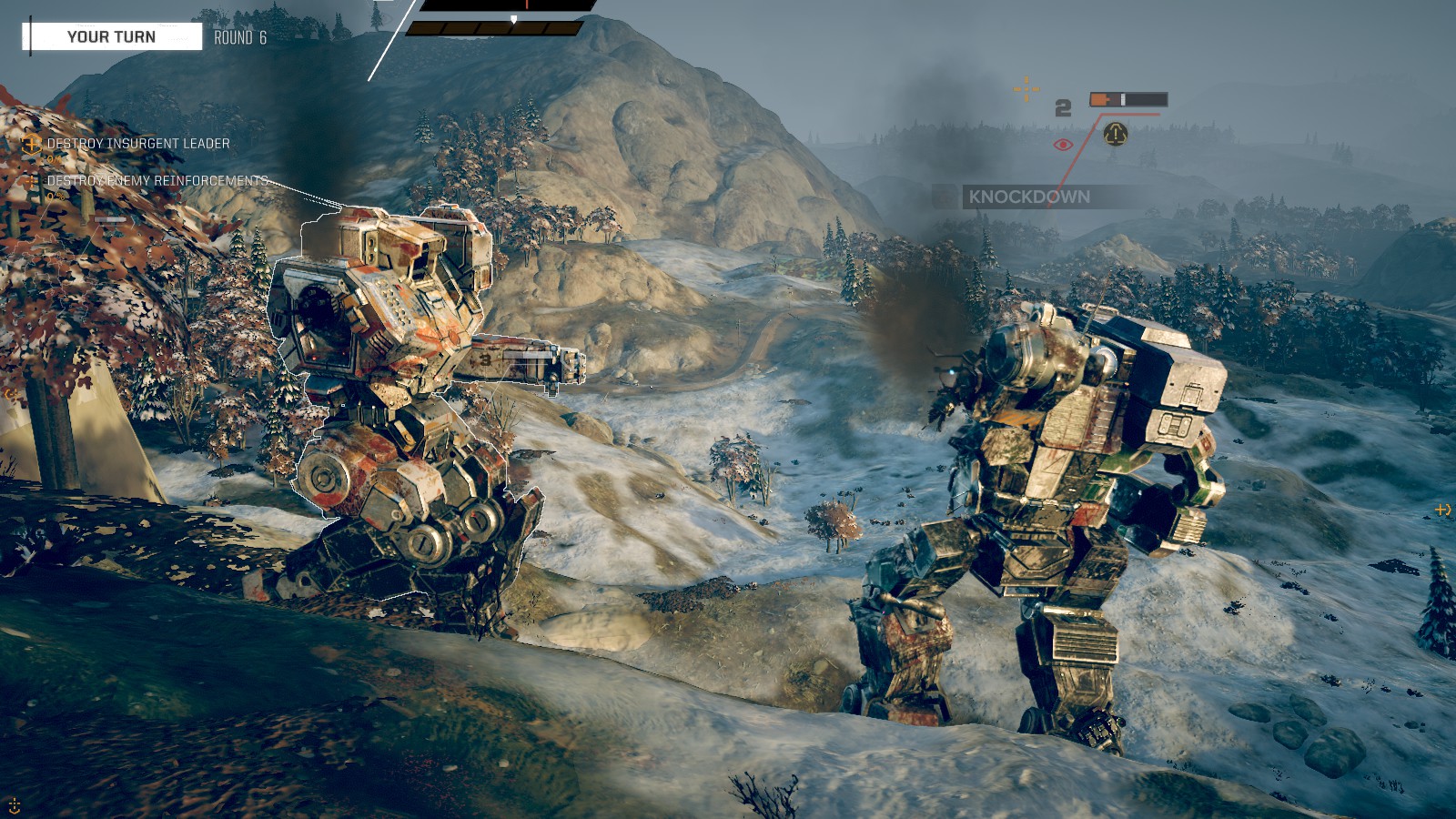 Well this is awkward … how are we supposed to shake hands when we both blew off each other’s right arms?
Well this is awkward … how are we supposed to shake hands when we both blew off each other’s right arms?
If you spent a whole lot of afternoons playing BattleTech: The Crescent Hawk’s Revenge as a kid, there’s a sense of wonder to seeing the tabletop game recreated in 3D glory, especially with that camera-shaking thud-thud-thud as the towering mechs sprint across the map.
Terrain plays just as important a role as weaponry in combat, as moving through geothermal areas can screw with your heat sink capability, and forests are extremely important in reducing long-range missile damage.
While cover isn’t nearly as big a focus, there are some broad similarities to the rebooted X-COM series in that you’d generally rather avoid damage entirely than soak it up. Repairing mechs and putting pilots in the med bay absolutely chew through your timeline and tend to be incredibly expensive, so staying one step ahead of bankruptcy and an empty mech bay is a constant worry.
After the first few tutorial missions, the actual battles themselves become a test of your prowess in leading a group of hardened mercenaries with the best strategies you can devise. The tide of battle can shift in an instant, and you need to learn how to adapt, quickly.
One particular mission against a large lance of enemy mechs sticks out for me. I was doing amazing and effortlessly mopping up the opposition for most of the battle. I was keeping my evasion up, repositioning to hit the enemy from the sides and back, and managing to always have my units exactly where they needed to be to unload with their best long- and short-range weaponry.
Out of nowhere a nearly dead enemy mech launches a desperate death-from-above attack and scores a critical, destroying the head of my most powerful undamaged mech and instantly killing the pilot.
In a single moment, that battle went from certain victory to hard-fought struggle (that was nearly a total loss), and it ended up costing more in repairs and hiring a new pilot than I actually earned from the mission!
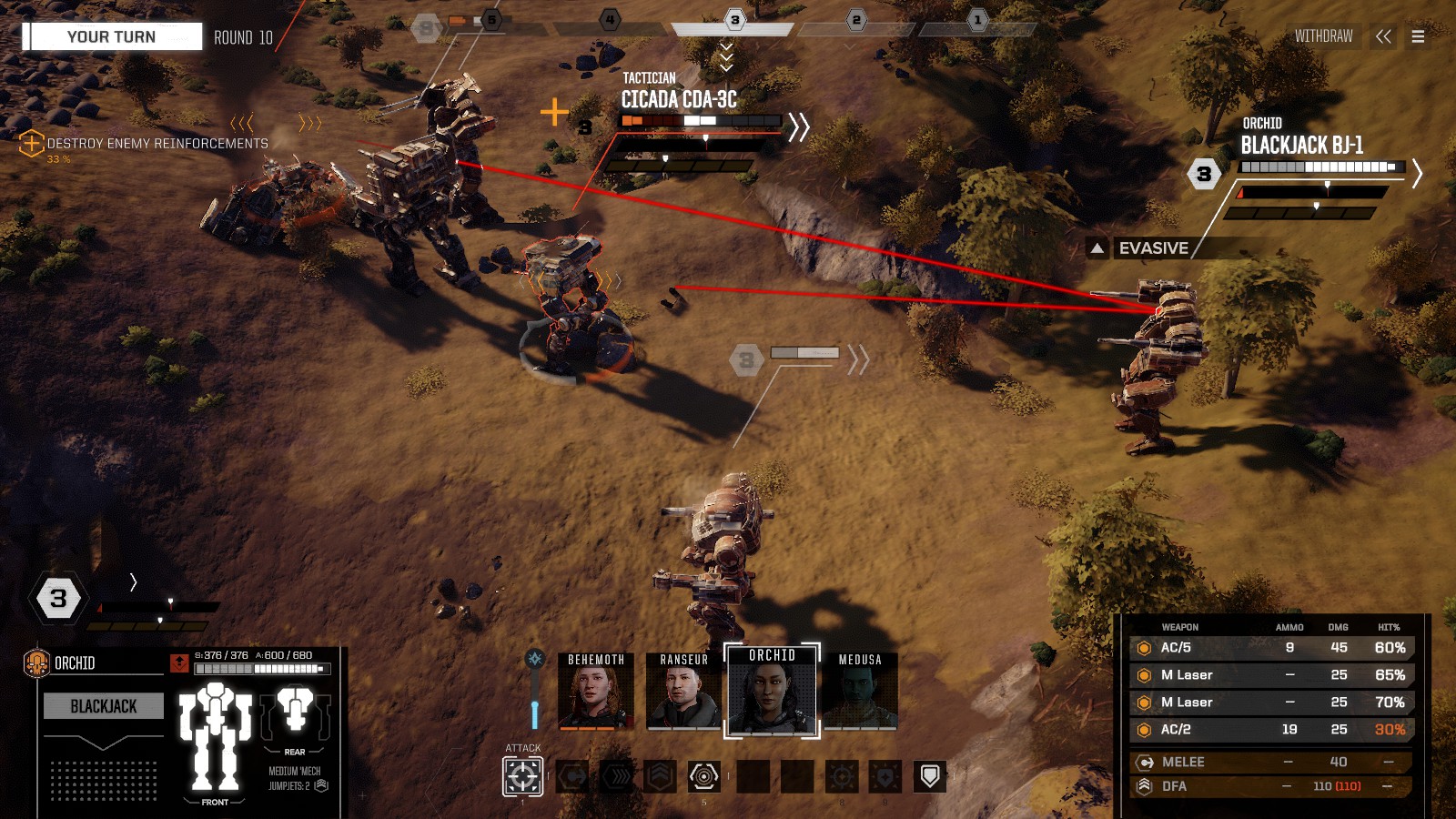 Positioning and proper use of weapon optimal ranges are key
Positioning and proper use of weapon optimal ranges are key
BattleTech Story and Characters
Mech combat can’t exist in a vacuum, and a tabletop game of this nature needs a backing story to keep you moving from battle to battle.
Here you take on the role of a mercenary company completing contracts for a variety of Inner Sphere houses and local planetary governments, with one particular noble house (invented by Harebrained to avoid story canon issues) repeatedly hiring you to wage their civil war.
During the story segments, you get to decide whether you play as a wide-eyed idealist, cautious realist, or hardened mercenary just in it for the c-bills. Unfortunately you don’t get to know the other mech pilots since they can die in battle freely, so the members of the ship crew who handle the maintenance and repairs serve a similar role as your companions from the Shadowrun Returns series.
Asking them about their backstories reveals their personalities and some history of the BattleTech world, although sadly, none of them are quite as interesting as Harebrained’s best characters, like Glory or Racter.
The engineer Dr. Farah Murad is probably the most entertaining to talk with, learning she doesn’t want to “murder people with lasers” in a giant robot and that she even ended up briefly marrying the host of a kid’s show she loved.
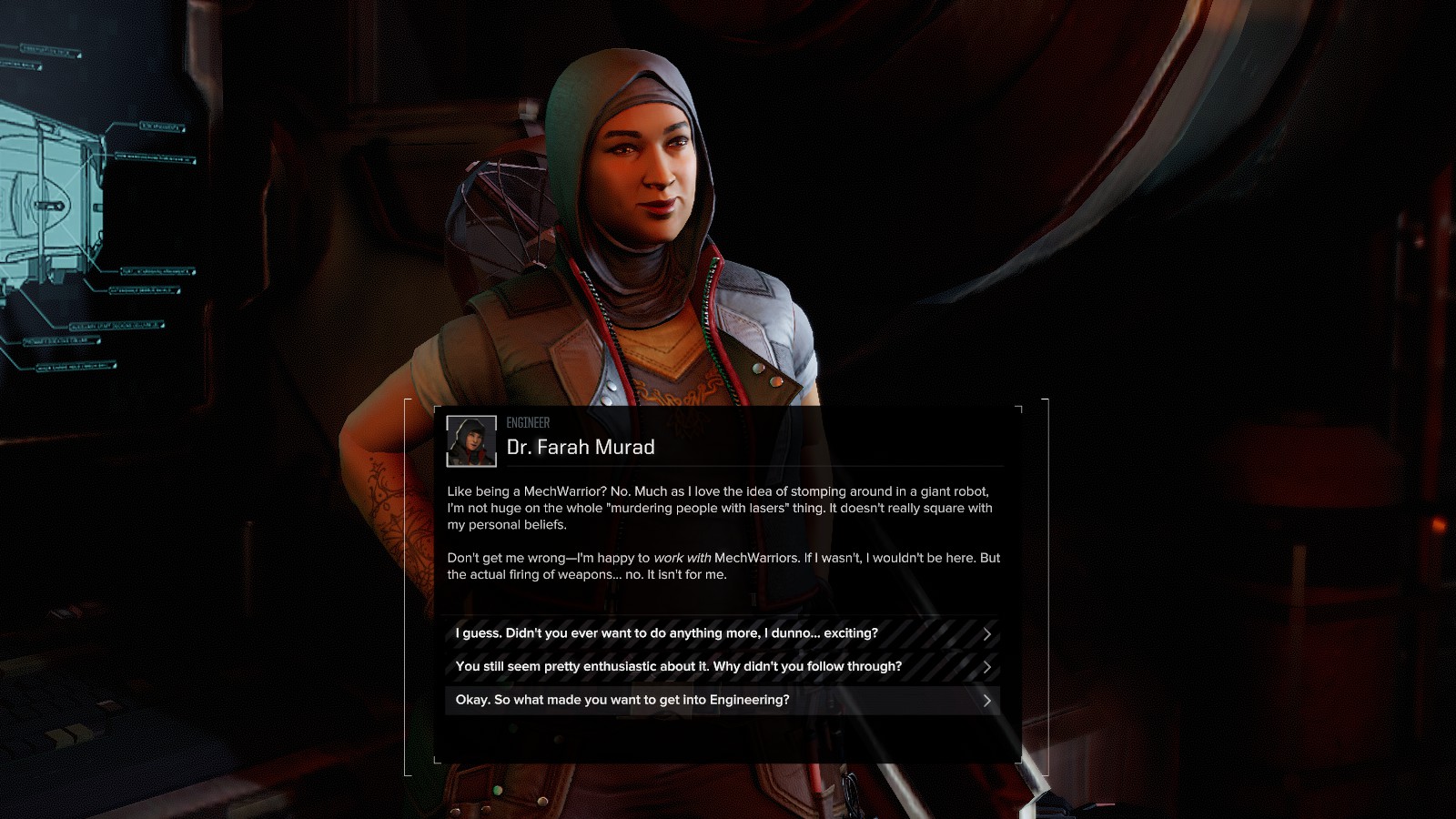 A wide range of characters will cross your path while waging war
A wide range of characters will cross your path while waging war
The Life of a Merc in 3025
Although it wasn’t apparent based off the original Kickstarter concept, BattleTech has a lot more going on than just a stream of tactical battles. Every element of a mercenary company’s existence is recreated here. I wouldn’t go so far as to say this is a 4X game, but there’s definitely strategy, management, and simulation elements present that go well beyond simple combat.
Along the way you’ll be juggling monthly expenses for the merc outfit with repairing and upgrading mechs, hiring new recruits, powering your ship’s facilities, and paying for the cost of traveling from system to system.
How you negotiate the pay for a contract will determine if you have the salvage and the c-bills necessary to keep your mechs in tip-top shape, and higher pay now has to be weighed against gaining reputation bonuses for buying cheaper equipment later on.
Of course, as a mercenary company hired to deal with inconveniences for pirates and governments alike, the things your clients tell you aren’t necessarily the truth. War is PR and perception as much as missiles and mech punches.
All kinds of random events will pop up to test your leadership skills while traveling through space, from dealing with a coffee shortage to the mech bays running out of room for spare parts to playing poker with your subordinates.
Different options taken will bestow bonuses or penalties on members of the crew (and these are often randomized, so you can’t always learn the best outcomes ahead of time). Some options taken in these events cost money but can give big bonuses, and best of all, they take into account your background and choices you’ve made so far throughout the game, giving a sense of RPG continuity.
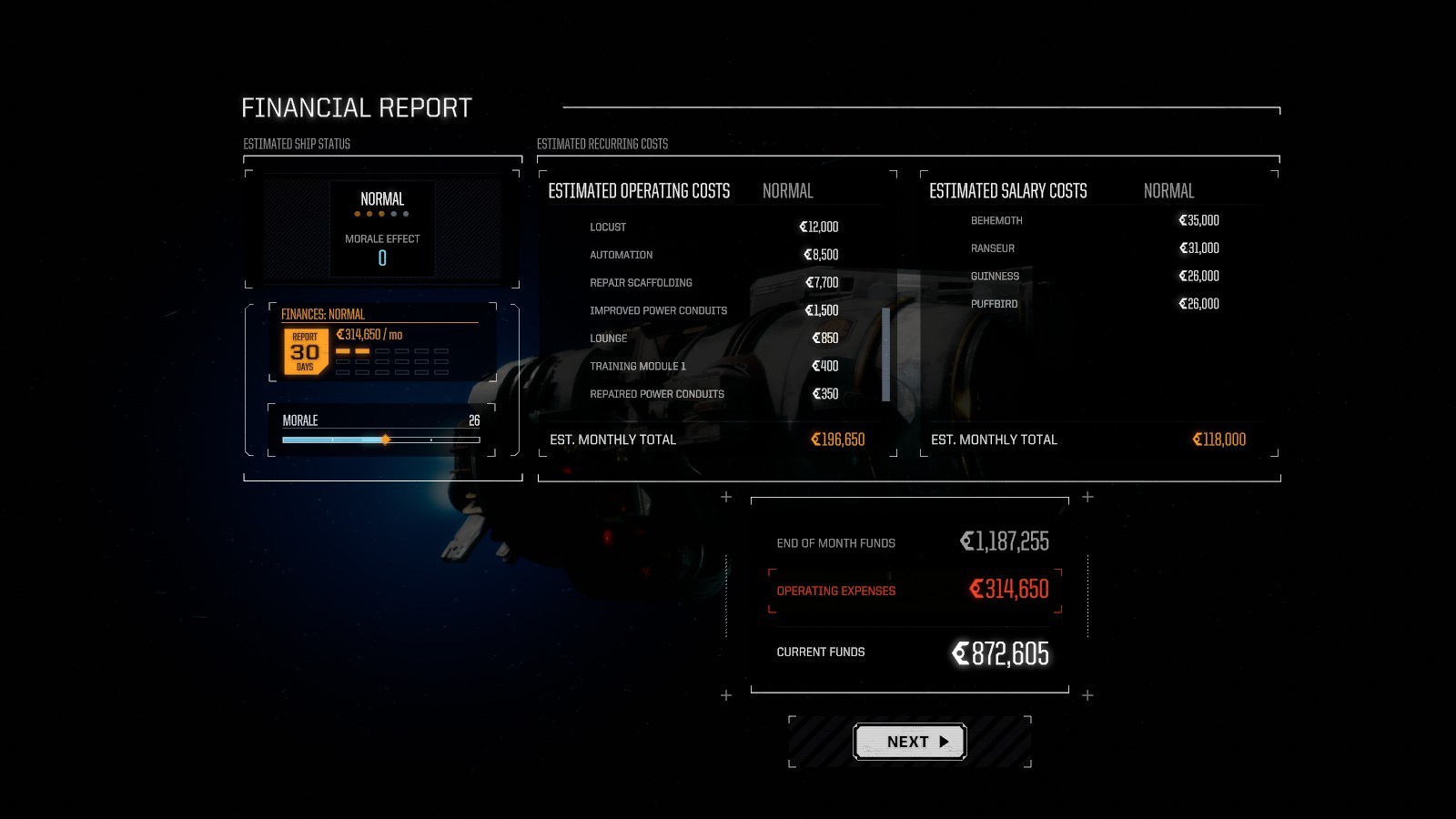 Financial reports? I thought I was just going to be blowing up giant robots!
Financial reports? I thought I was just going to be blowing up giant robots!
Some Nagging BattleTech Issues
Although the combat overall is everything you’d want from a tabletop-to-PC conversion and the management elements are fairly elegant, there are times where the turn-based nature of the game can hamper the fun.
For instance, whenever there’s an objective to get all your mechs to a specific area (thankfully few and far between in the mission objectives), the game just slows to a crawl. If there’s no chance of the enemy catching up and taking you out on the way there, the mission becomes an endless turn-by-turn slog as you crawl across the terrain.
Visually, there are a few negatives here and there as well. The melee attacks for some of the mechs aren’t particularly inspiring, and some of the camera angles are a little awkward when battling on different elevations in hilly areas.
Of course, as a newly released game, a few bugs are still in need of patching. Most noticeably, I found that sometimes mech repair jobs didn’t take the number of days they were scheduled to take, and the evasion ability seems to work against melee attacks even though it isn’t supposed to. I’d expect those to get resolved within a few weeks as player feedback rolls in.
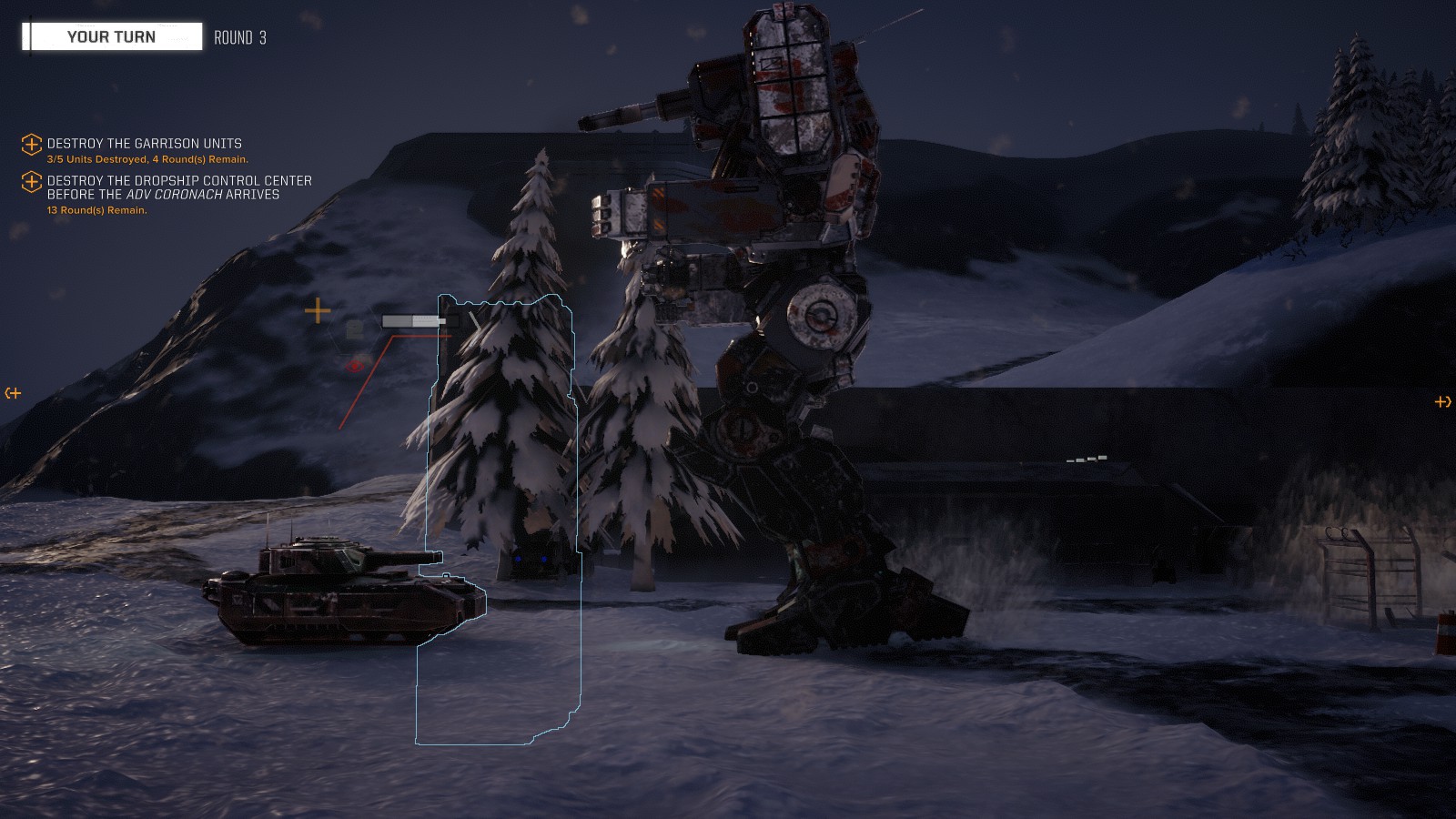 Oh hi, Mr. Tank, ready for me to step on you? It won’t look that great, but you will explode, and that’s always fun.
Oh hi, Mr. Tank, ready for me to step on you? It won’t look that great, but you will explode, and that’s always fun.
The Bottom Line: Should You Buy BattleTech?
If you love tactical, turn-based combat, then yes, you absolutely should buy BattleTech at launch, although there’s a possible caveat here.
The game really throws you into the deep end on mech repair and upgrades without much in the way of a tutorial. If you are familiar with BattleTech, this will be less of an issue, but anyone new to the franchise is going to be lost for the first few hours in the bewildering array of options.
I played a fair share of FASA BattleTech as a kid, but there were still times in the opening missions where I found myself having no idea why this bar was a different color than that bar, or wondering how the hell does this mechanic work?
That being said, longtime franchise fans are going to eat this up and beg for more, and once the newbies get over the learning curve, BattleTech‘s different elements come together for an amazing tactical strategy game that’s just about everything we hoped Harebrained Schemes would deliver.

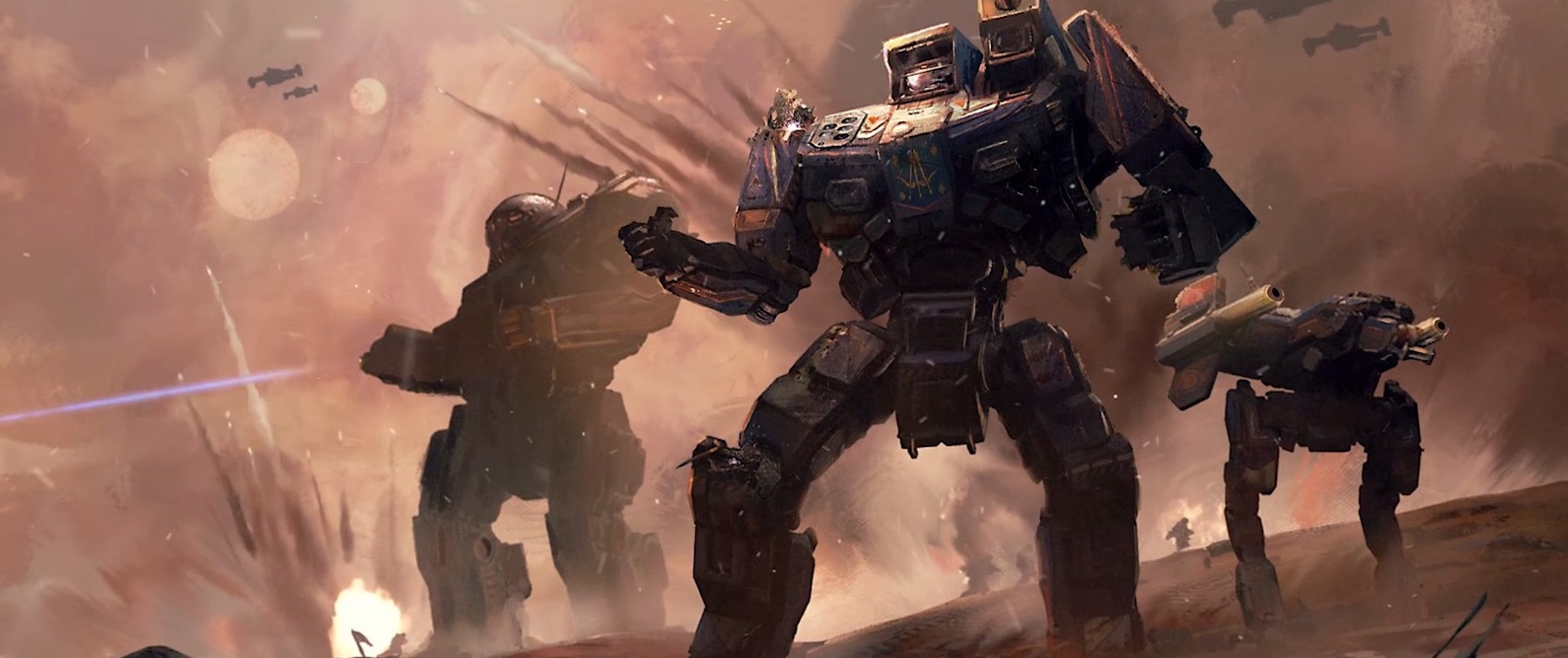








Published: Apr 23, 2018 01:43 pm